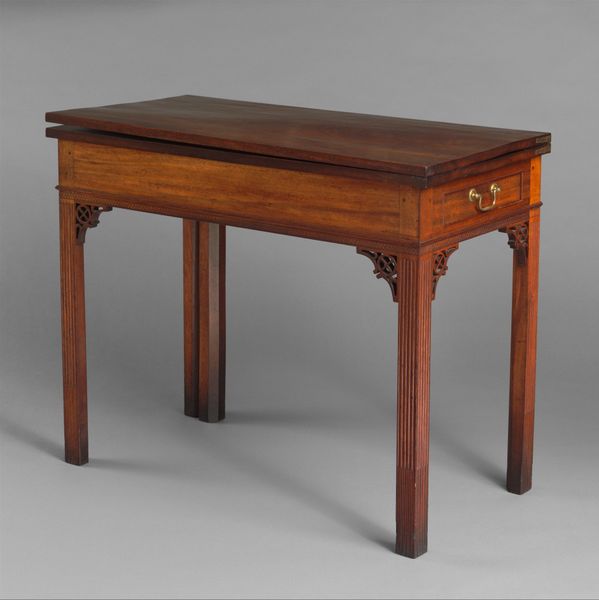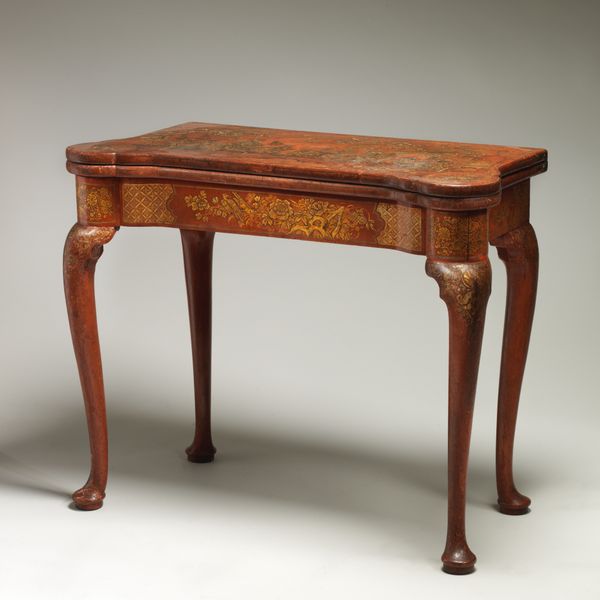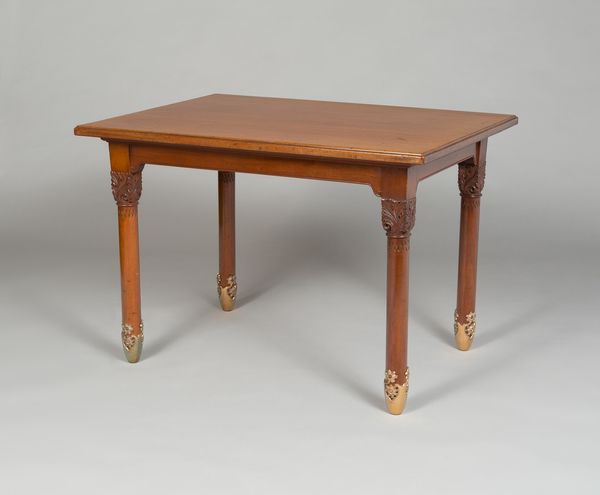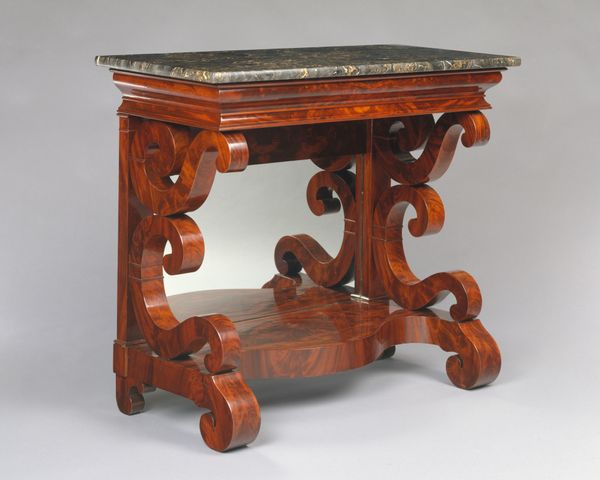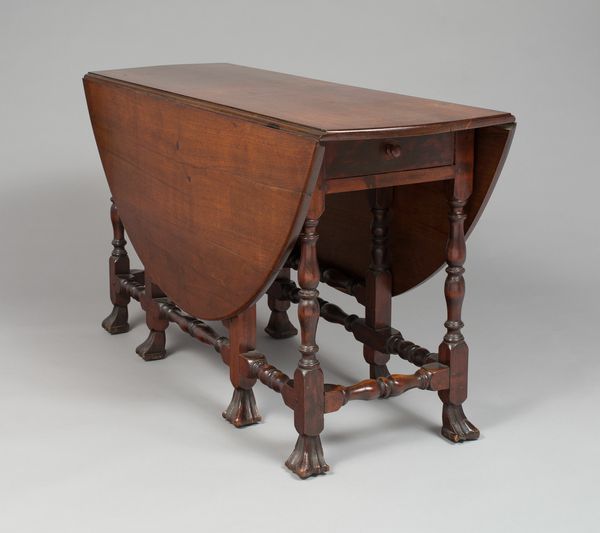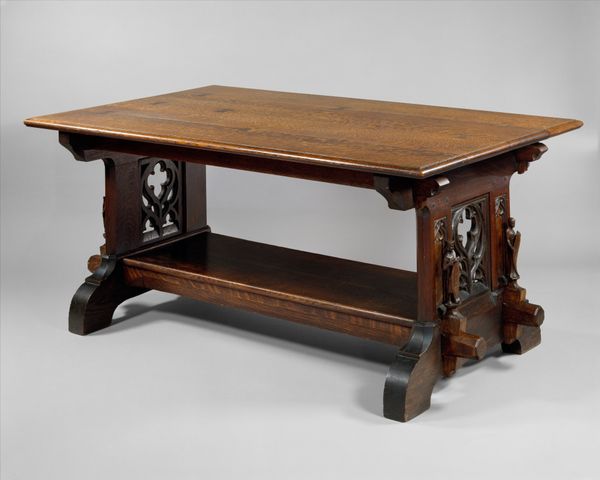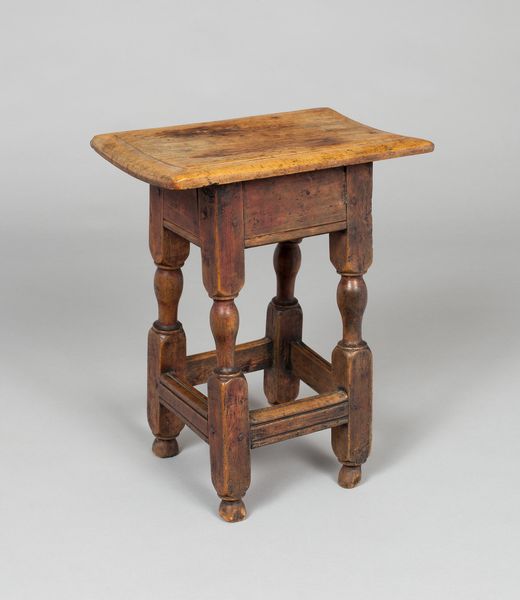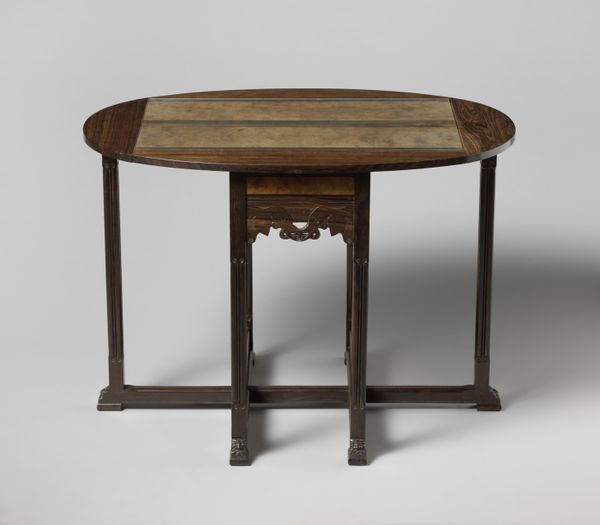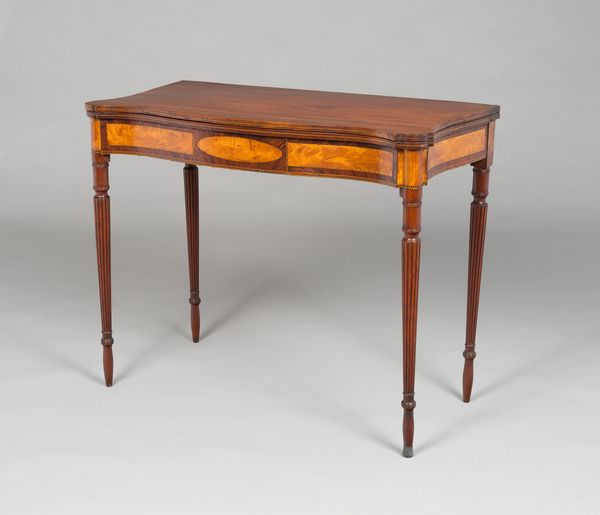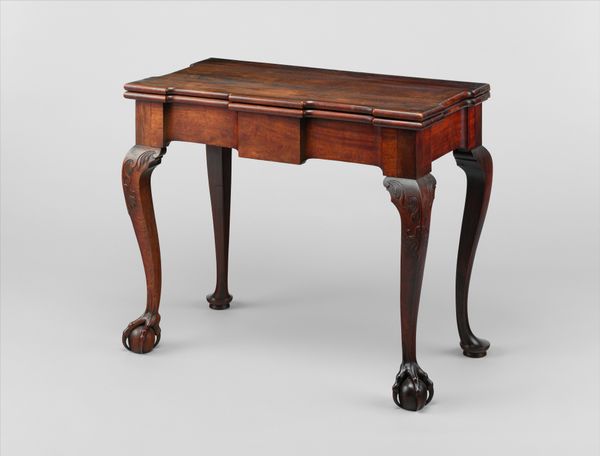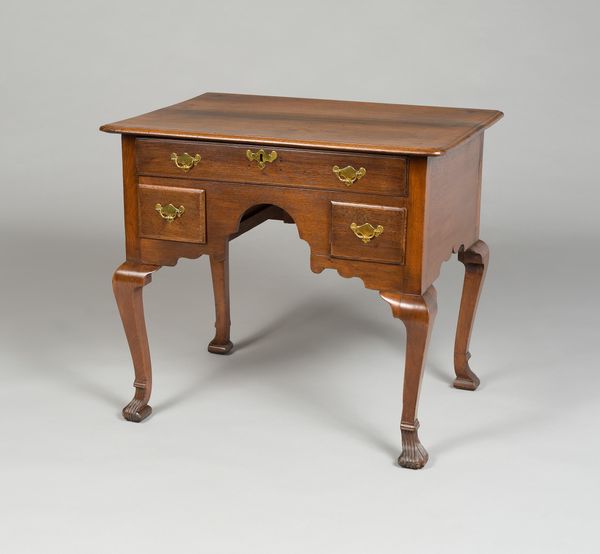
wood, marble
#
portrait
#
neoclacissism
#
furniture
#
classical-realism
#
classicism
#
ceramic
#
united-states
#
wood
#
decorative-art
#
marble
Dimensions: 35 7/8 x 42 1/4 x 18 7/8 in. (91.1 x 107.3 x 47.9 cm)
Copyright: Public Domain
Curator: Alright, let's dive into this "Pier Table" crafted sometime between 1835 and 1840, attributed to the renowned Duncan Phyfe, and currently residing at The Met. Editor: Oh, it has a grand, slightly serious air about it, doesn’t it? That gleaming wood, the stark marble top—like it's waiting for some profound pronouncement to be made upon it. Curator: Precisely! Its Neoclassical style roots it firmly in a period enamored with ancient Greece and Rome, reflected in its symmetry and classical motifs. These objects were often placed between windows in fashionable parlors of the time, so Phyfe was really crafting both an object and an environment. Editor: That marble top practically begs for dramatic gestures. But it’s funny, seeing this now, it feels both timeless and deeply anchored to a very specific vision of elegance and class in early America. It’s as if this table held secrets of bygone drawing rooms! Curator: You’ve hit upon a crucial point. Phyfe’s workshop, while celebrated, was also implicated in the economies of slavery. The raw materials, the very leisure that afforded such elaborate furnishings, were inseparable from exploitative labor practices. These objects of beauty also reflect social stratification. Editor: Ugh. Right. I get caught up in the surface—the craftsmanship—and then… bam. Suddenly it’s a portal into all these other complexities. It does change how you see those graceful curves, doesn’t it? What about the material itself; how does the medium fit the message? Curator: The contrasting materials are vital; the warmth of the wood versus the cool detachment of the marble. It's a conversation about status. These were statements of refined taste and wealth, signifiers in the complex social theater of 19th-century America. Marble symbolizes both permanence and affluence. Editor: Yes, so, now when I see it, the "Pier Table," this is really more than a decorative flourish in an American parlor... Curator: Exactly, we're invited to ponder not just its surface, but also its relationship to broader power structures, inequalities, and hidden narratives deeply embedded within our collective history. Editor: Gosh, that’s a lot to balance on one table. Well, I'll never see it the same way again! Curator: Indeed. Objects like this become active participants in ongoing dialogues about who we were, who we are, and what we aspire to be.
Comments
No comments
Be the first to comment and join the conversation on the ultimate creative platform.
